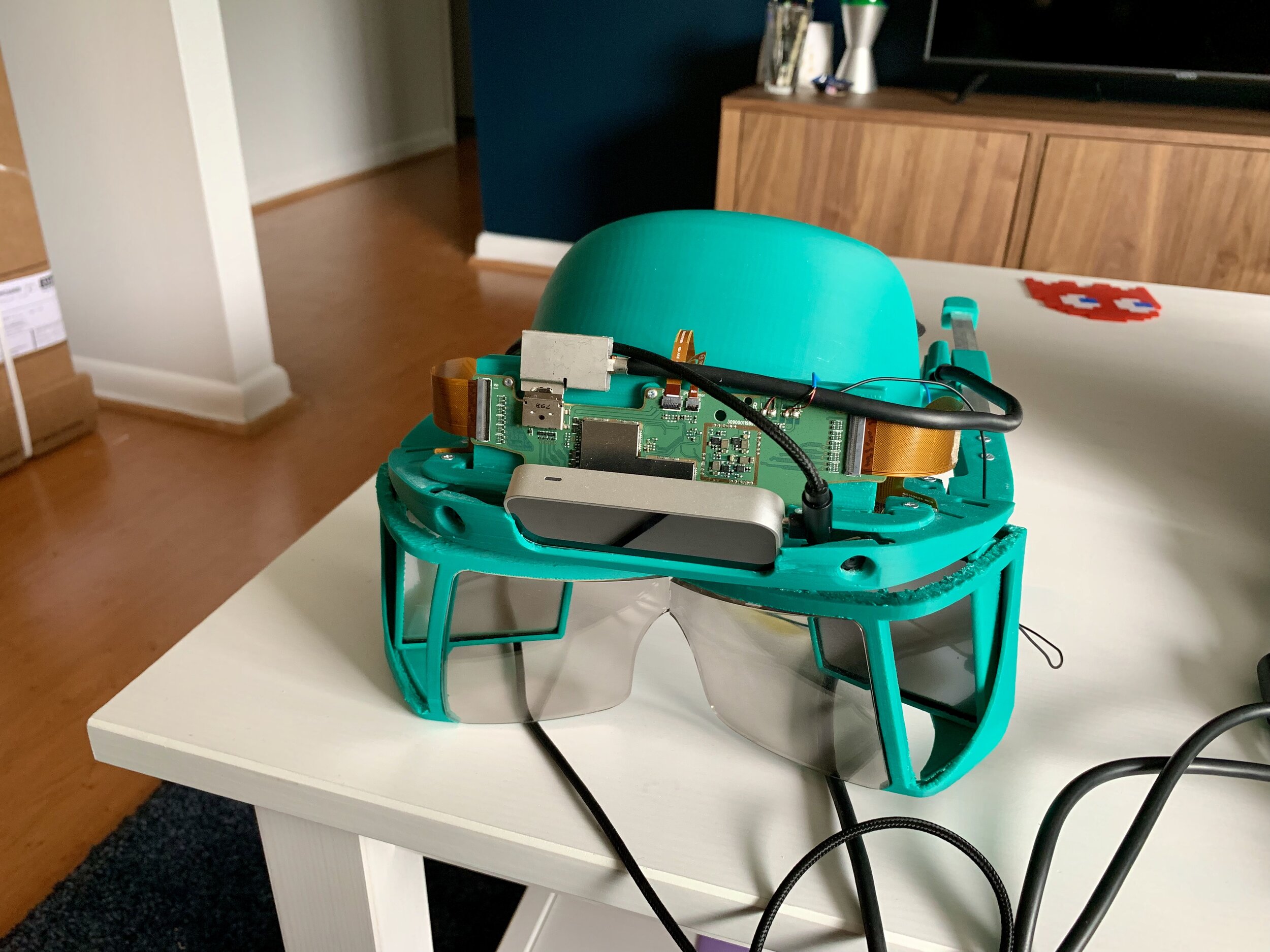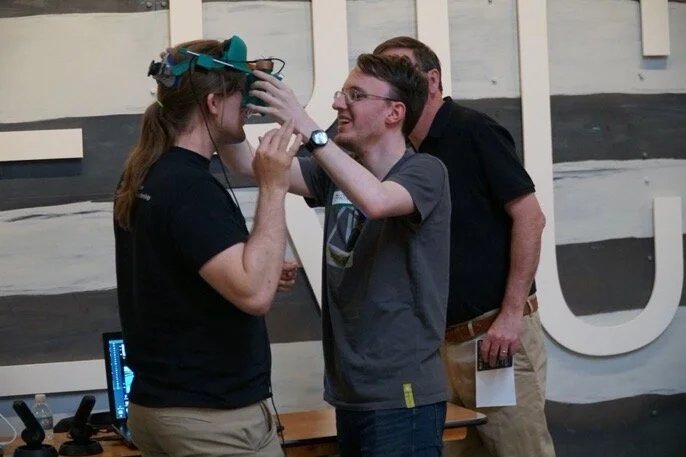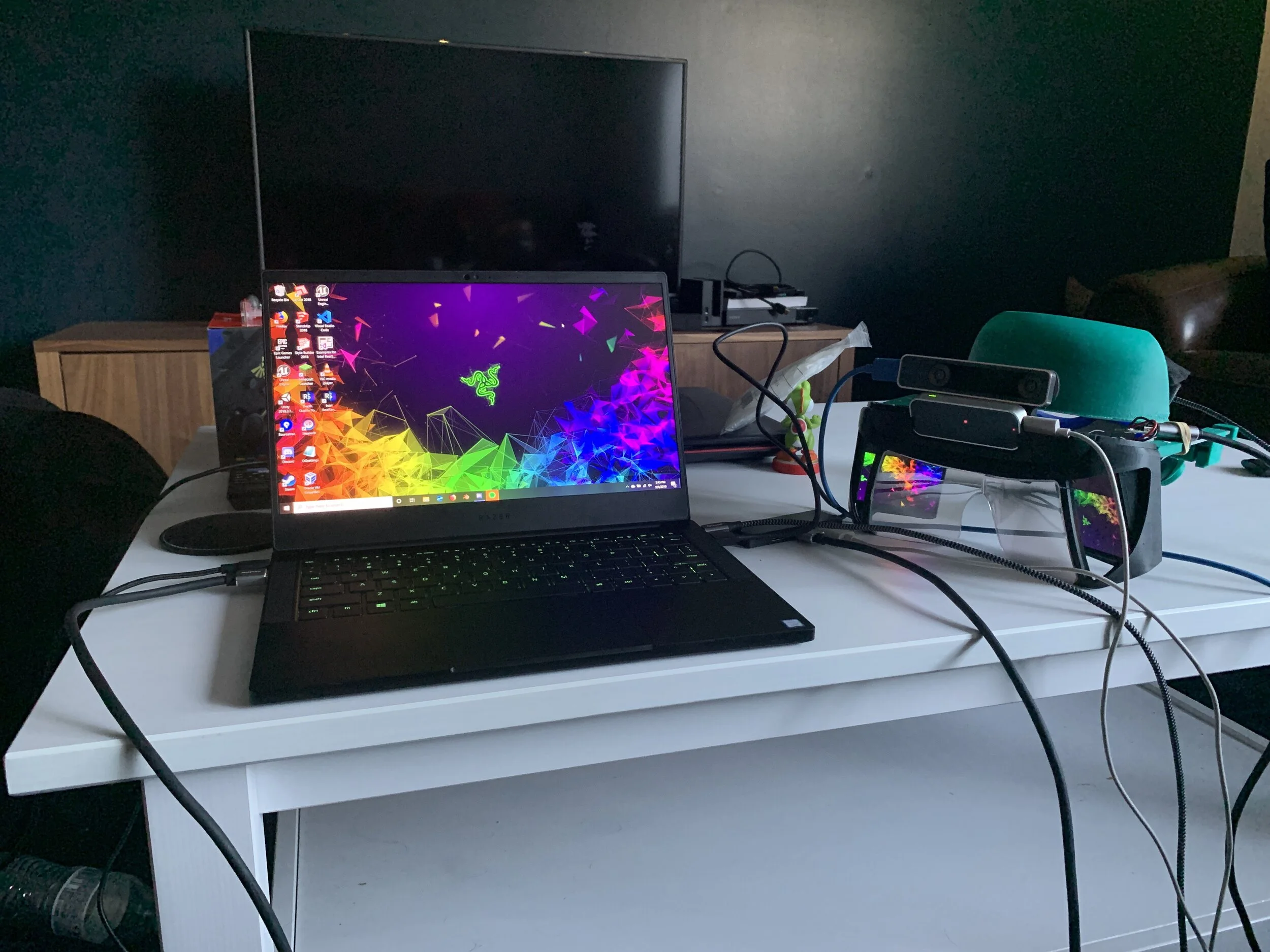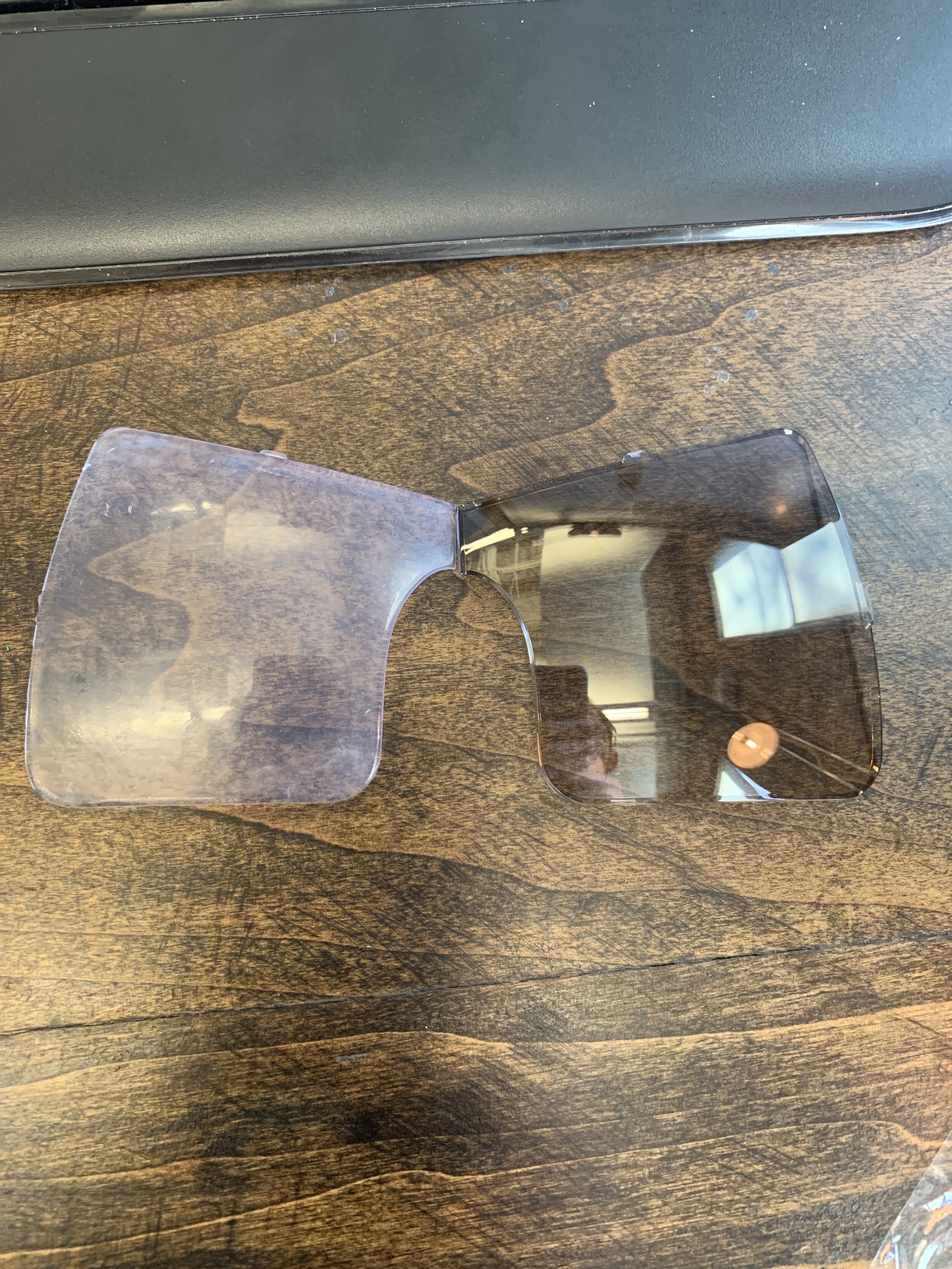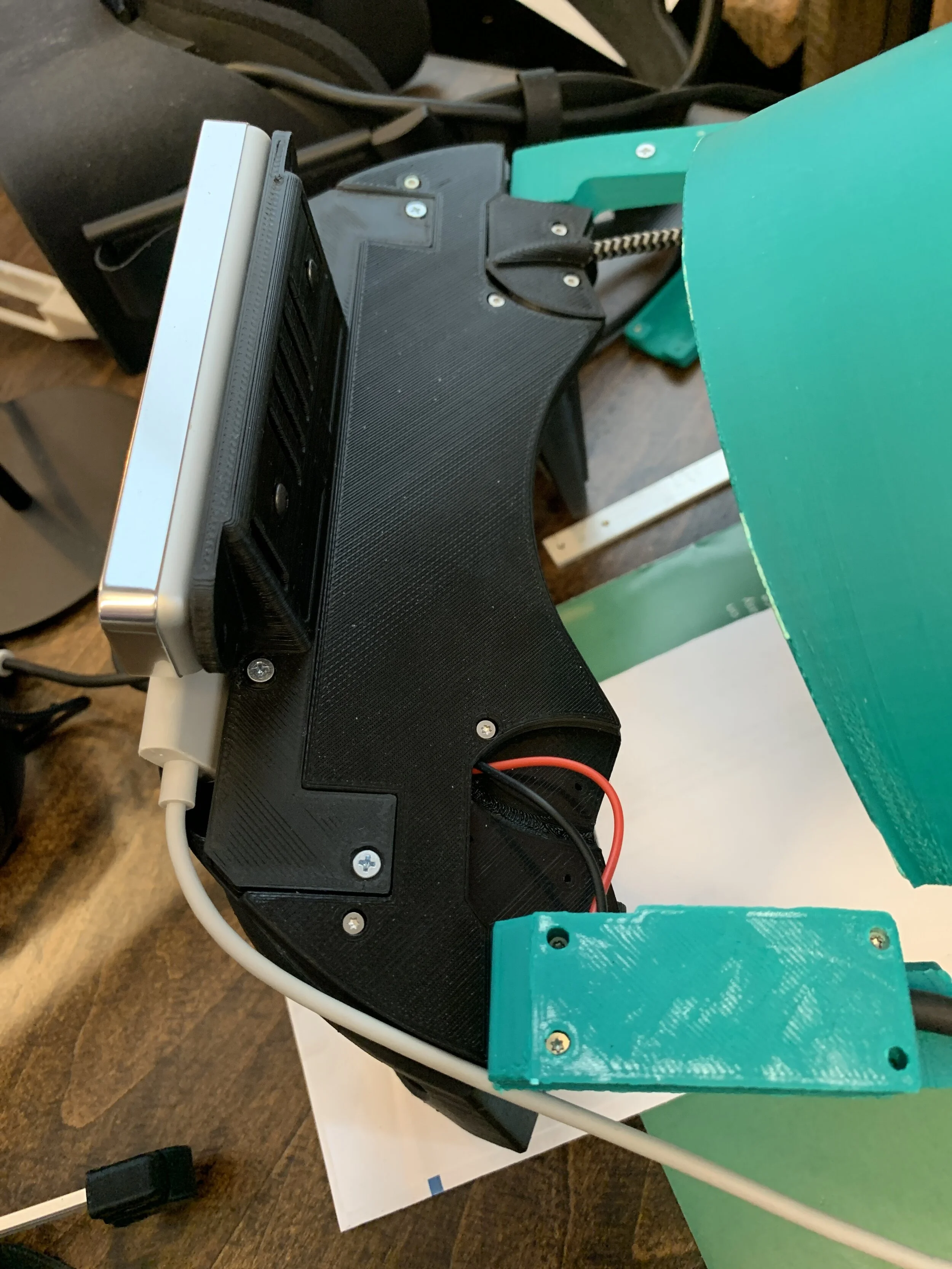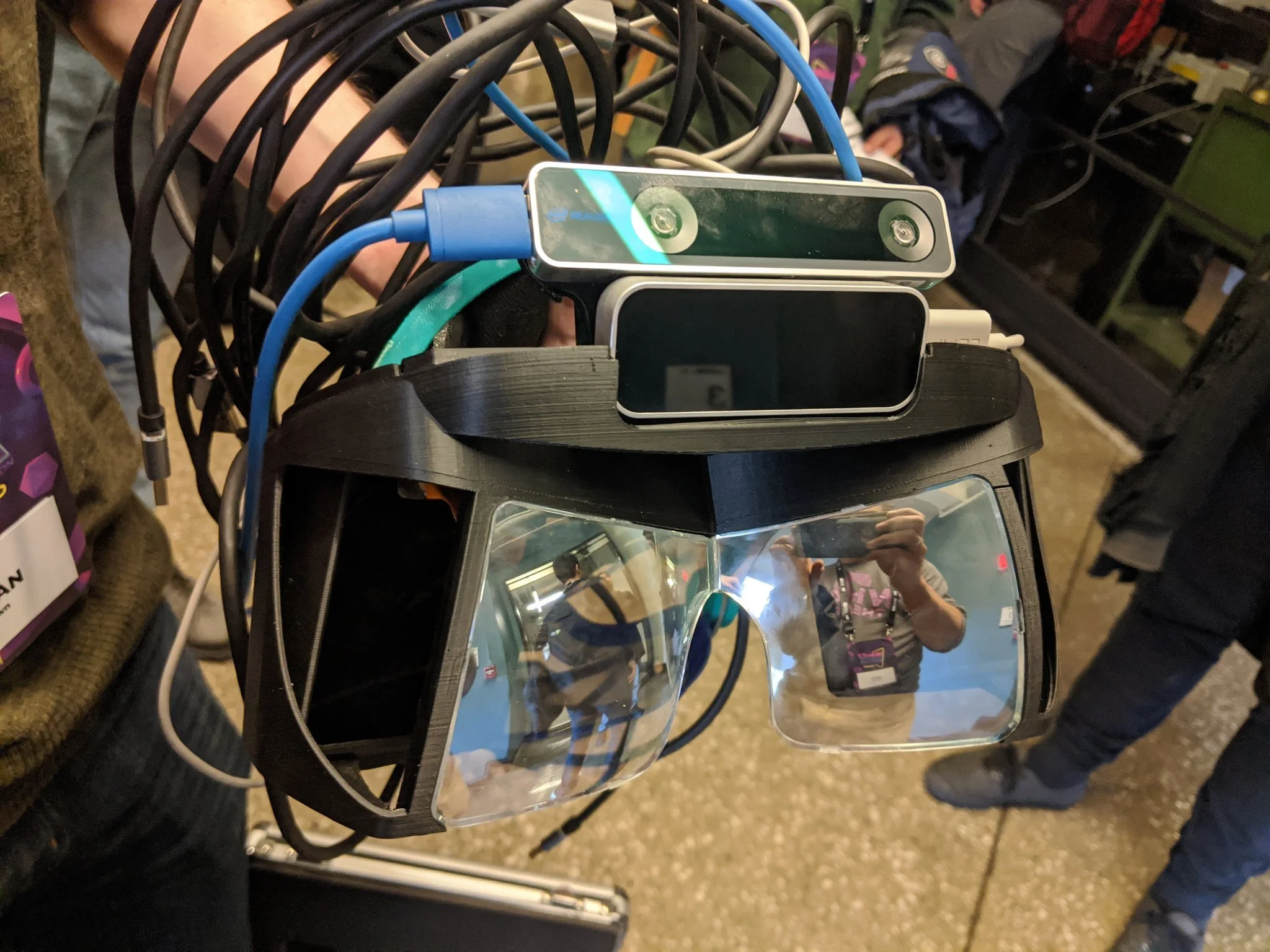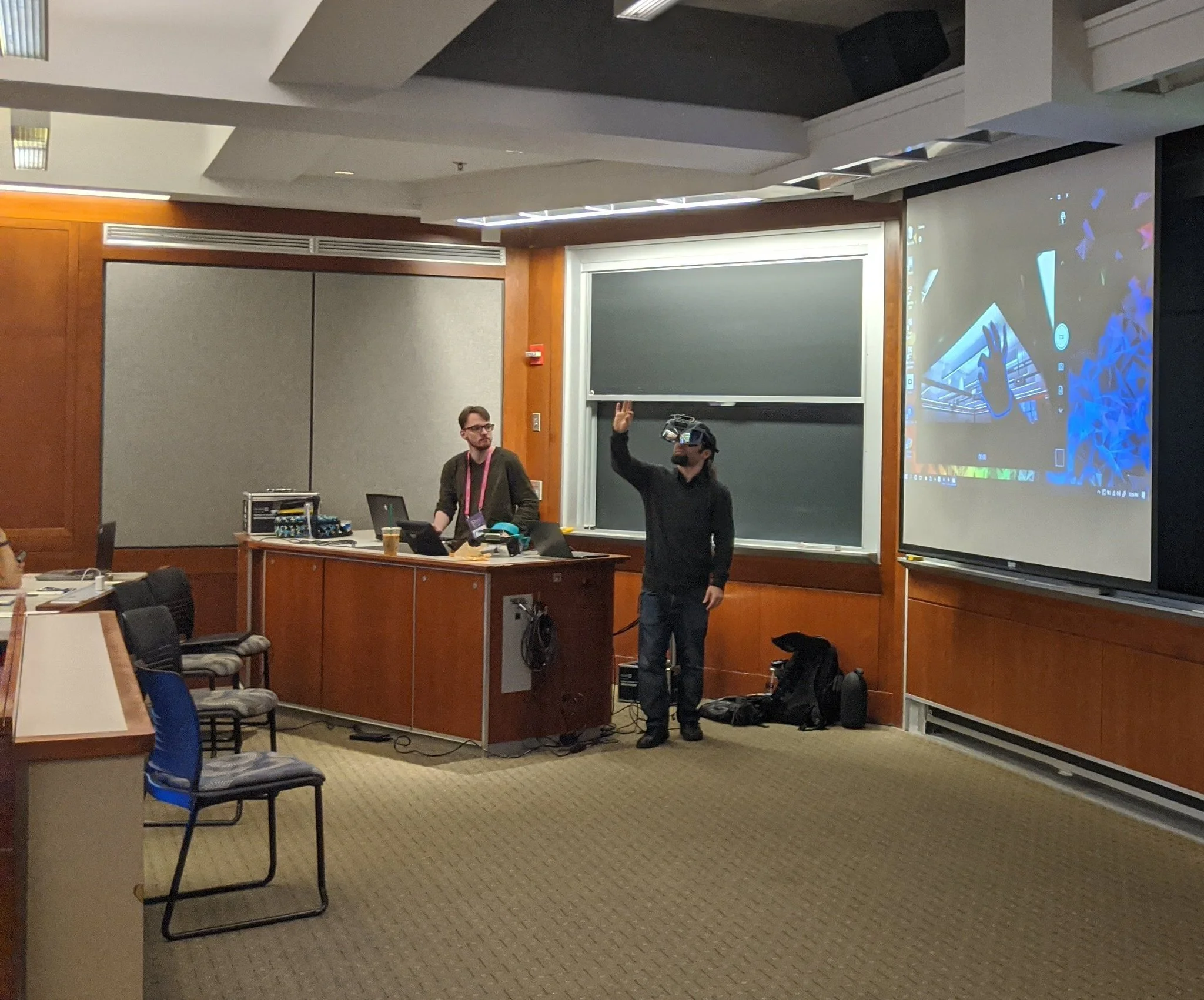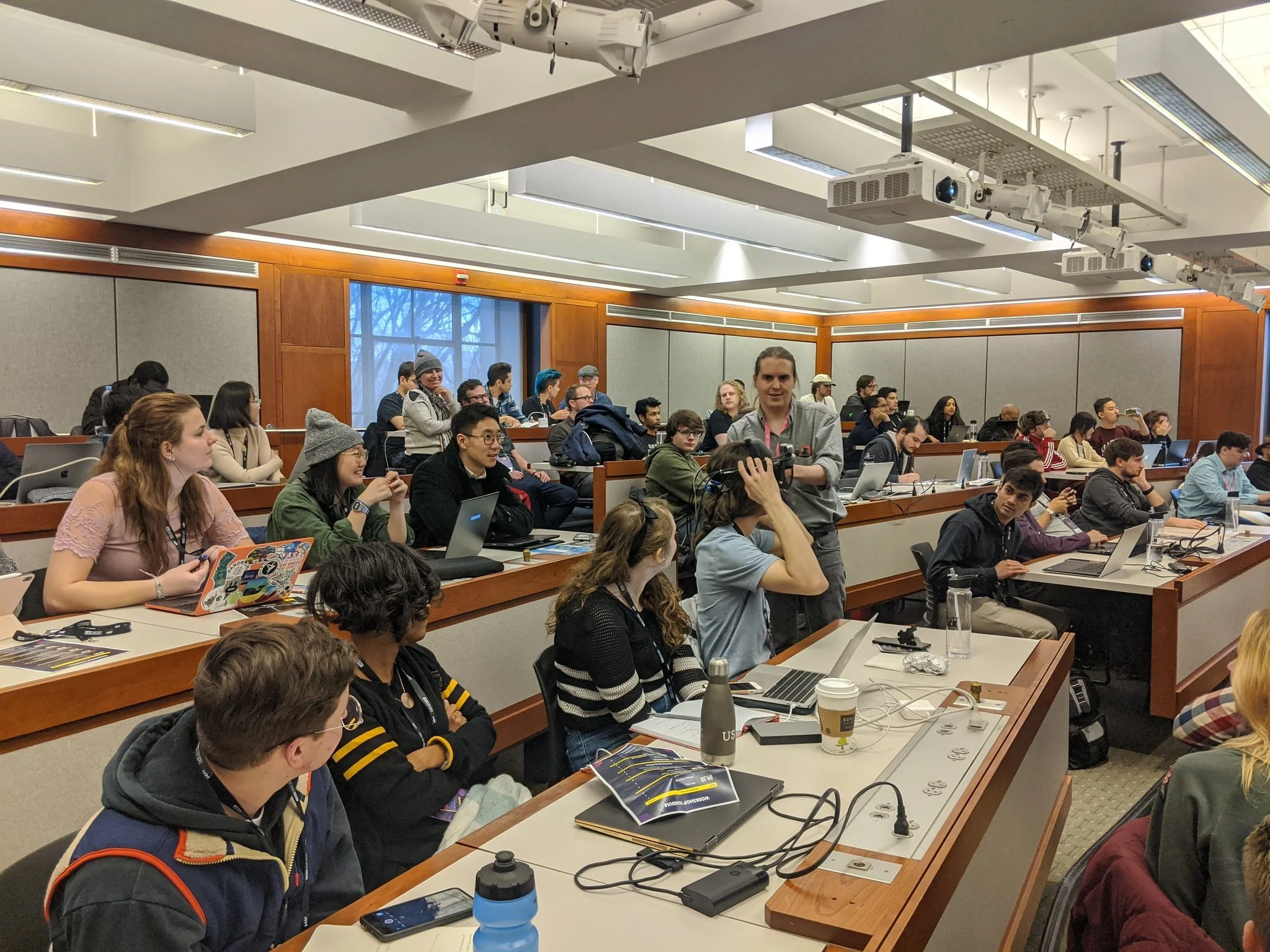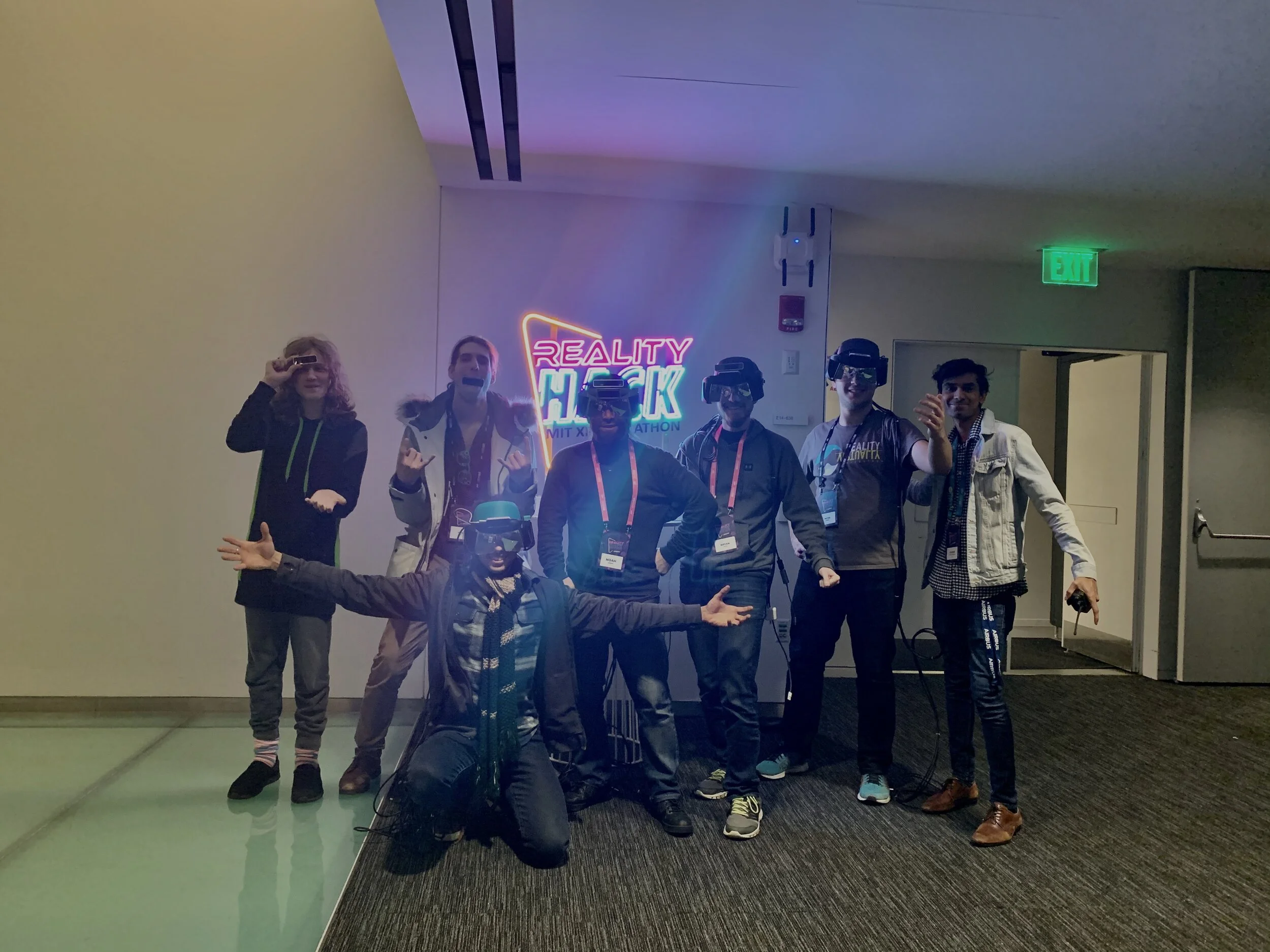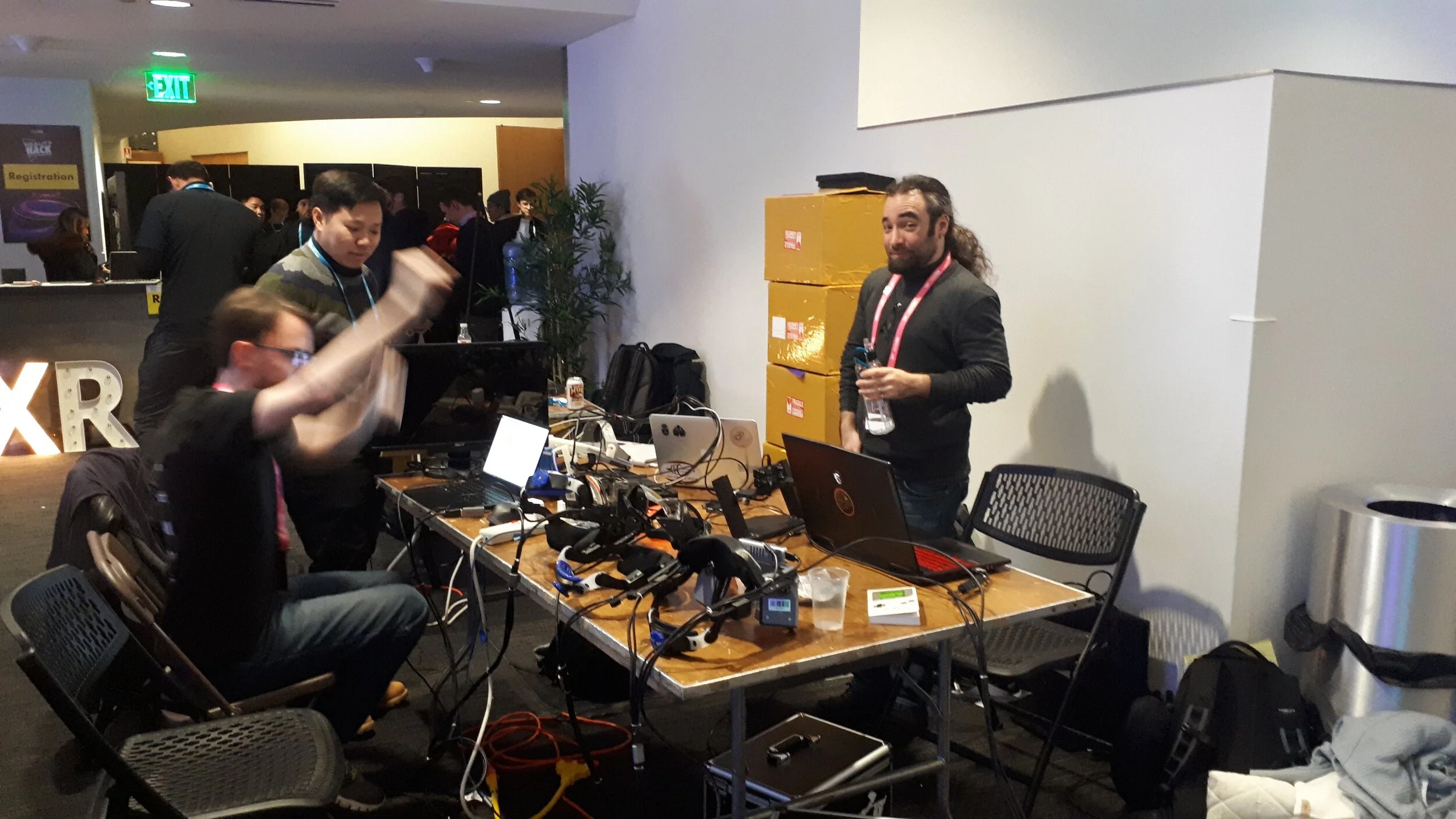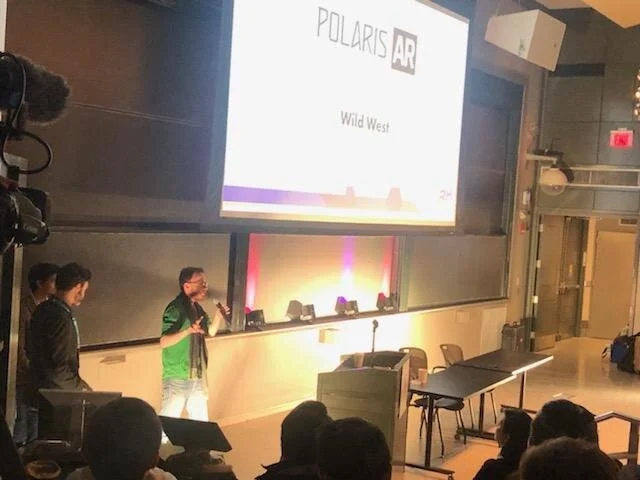In progress disassembly of Samsung Odyssey Headset
Gen 3.2 NorthStar, BOE 3.5” displays, Improved Reflectors, Intel Realsense T-265 for 6DOF.
PROJECT NORTHSTAR
Project Northstar was started in the summer of 2018 by LeapMotion (now UltraLeap) with the goal of creating an open source, accessible headset with a wide FOV and industry leading hand tracking technologies. I’ve been involved in Project Northstar since the original blogposts, and created multiple community channels to help other users design, iterate, build, and manufacture the headset.
The first challenge came with acquiring the reflectors. It was difficult to access to the high end diamond turning that was used to make the original prototype, and it was also exorbitantly expensive, at $200 or more per lens at a minimum, and that didn’t even include the process of coating the reflectors. During the start of the project, users turned to 3D printing via clear resins to get reflectors made. These reflectors had a number of problems, such as cloudiness, extremely low reflectivity, and surface quality issues, but it was enough to keep the community going while others researched different methods of manufacturing including vacuum forming, CNC machining, and injection molding.
The second challenge involved getting the electronics manufactured, the original screens specified were only available via bulk order, and were not sold individually. Users overcame this by using raspberry pi screens, and screens from other vendors that were available through alibaba or Ali express. I decided to go the route of disassembling a vr headset to rebuild it into a Northstar form factor. My first attempt at this failed due to an error in the manufacturing of custom FPC cables needed to extend the display connection. My second attempt involved taking apart a Samsung odyssey headset which had adjustable IPD, and extra FPC cables that would allow me to complete my build. I also intended to use the inside out tracking from the Samsung odyssey. This process mostly worked, and I was able to use the 3DOF from the headset successfully, but disassembling the headset caused the cameras to lose calibration and not work with the visual slam system on the windows mixed reality platform.
Shortly after I finished my hacked headset, Noah Zerkin began manufacturing the driver board for the original headset and also refined the reflector manufacturing process through his company Smart Prototyping in Shenzhen. This allowed more users to build headsets and get into developing software, tutorials, and documentation for others. The Northstar discord has ballooned to over 1500 users, and has been an incredibly supportive group of students, researches, hackers, and AR enthusiasts.
One of the earliest members of the community, Eswar; a Graduate student at MIT, invited Noah and I to the MIT Reality Hack as mentors for North Star. Noah was able to supply 10 headsets for hackers to use along with HTC Vive Trackers to 6DOF. The hackathon was a huge success and it was an incredible experience to be able to demo Northstar alongside headsets like the HoloLens 2, MagicLeap and Nreal devices. All the attendees who tried Northstar loved the Field of View and the high quality hand tracking achieved with the design.
After the Reality Hack we led the first design meetup for the headset in Mozilla Hubs, with multiple industrial designers and active members of the Northstar community. Meeting in a spatial environment like hubs was a great way to convey 3d ideas and get feedback, we were even able to split into different groups by just moving to other areas of the room!
Now that the major manufacturing challenges are solved, we’ve started to spend resources on developing software, including steamVR support to allow Northstar users to have access to a tremendous catalog of VR games, as well as access to whichever 3D engine they choose.
When I first started this project I had no idea I’d be talking about it at MIT, in front of over 400 developers from around the world. I’ve been blown away by the amazing community for Northstar, the support I’ve received, and the willingness of others to offer help, time and advice. I can’t wait to see what the future of this platform holds.

